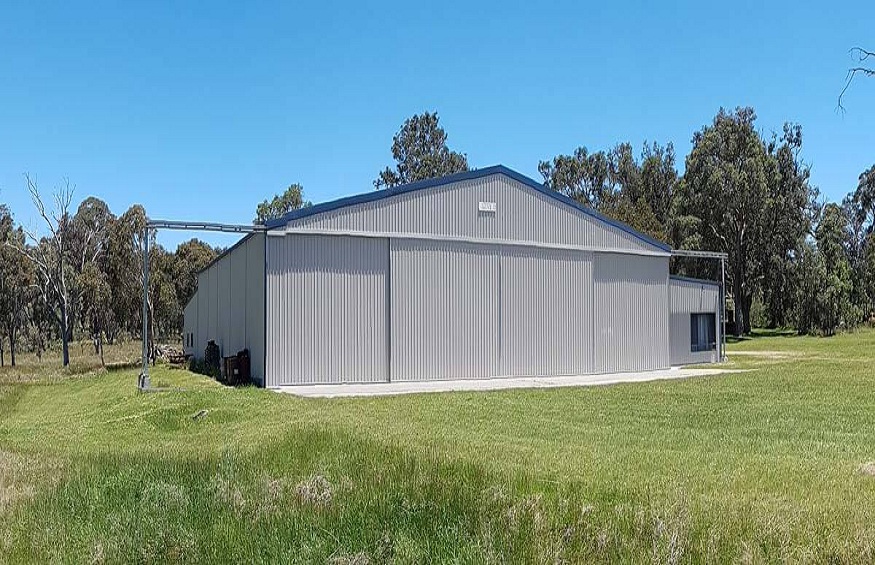Building A Hangar Your Aircraft Hangar Design & Construction Guide
4 min read
Introduction:
This guide is intended to aid in the design and construction of hangars for private aircraft. which assists the individual in selecting a site, planning the layout, and executing the building of a hangar. The hangar shown here is typical of the thousands which have been constructed and is a good example for study. This guide is not intended as a substitute for professional advice.
What is a Hangar?
A hangar is a building designed primarily to shelter aircraft from the effects of weather and, to a lesser extent, from vandalism while being made available for that purpose. A hangar is not necessarily the same as an airport building such as those used for administration, the servicing of aircraft, or public accommodations purposes.
The Essential Qualities of a Good Hangar:
A good hangar is light weight and easy to move if necessary without causing damage to it or its contents. It should have adequate headroom and clear space around the outside of it to permit ready access by service vehicles. It should be well ventilated, providing fresh air for the aircraft in all weathers, as well as ventilation for its occupants. It should not have any harmful or hazardous construction materials such as asbestos.
The Safety of a Hangar:
A hangar is a temporary facility so it is not designed to withstand long term exposure to the weather. A hangar must be designed and constructed with safety in mind from the beginning if it is to last indefinitely. Weather related damage such as cracking and failure of supporting timbers or decks may cause collapse of the hangar or damage to an aircraft inside it. Fire has been known to destroy hangars at short notice, as demonstrated by two recent cases in which a hangar caught fire within minutes of its completion.
Construction Guide for Building A Hangar:
1) Select a suitable site. A new and well drained site is recommended. However, where this is not possible, sites which have been reclaimed by planting grasses, such as cutover forested mountainsides, may be acceptable if the site has been treated to reduce run off into the soil during construction. The site should be level and free of trees and other obstructions that would make access difficult.
2) Level the ground before building on it. A level site will prevent damage to aircraft during transport or in hangar incidents. For some designs of hangar a subgrade must be constructed so that the hangar does not settle with changes in humidity or temperature.
3) Find a place to do all of the work. Some kind of shelter is required to protect the workers from the elements. The hangar shown has been built in an aircraft hangar at a flying field, although it could have been built in any suitable shelter, such as a shed or large vehicle.
4) Cut or drill the wood for your brackets, beams and posts. Sawn wood for wooden construction is relatively heavy and will require more labor to move about during construction. When using thicker material such as 3/4″ lumber or 2×6 lumber it may be possible to use smaller bearings for anchorage flanges so that you can remove and replace it as required without making major structural changes to the hangar.
5) Build the hangar floor. Start by building an adjustable subgrade for the hangar floor. It must be strong enough to support the weight of the hangar and its contents, but it should not be so rigid that it will not flex in response to ground moisture changes or temperature fluctuations. It is recommended that you make provisions for drainage under the floor so that water will drip away from the hangar rather than ponding up under it.
6) Build the main structure of your hangar. This should be done so as to minimize cracks which are likely to form between this and other buildings or between this building and its foundation.
7) Finish the hangar. Hangar finishes come in a variety of materials from wood to aluminum or from paint to fabric. It is necessary that the finish be weather resistant and that it does not collect moisture underneath it which could be a fire hazard. A good finish for a wooden hangar floor is waterproof plywood, which should be at least 1/2″ thick and either painted or coated with an asphalt-based waterproofing compound.
Conclusion:
Hangars are a necessary part of flying and an attractive feature to have on your property. They should be designed with safety, as well as convenience in mind. You will have many years of enjoyment from a well planned and properly constructed hangar that you can be proud to show off to your friends.







